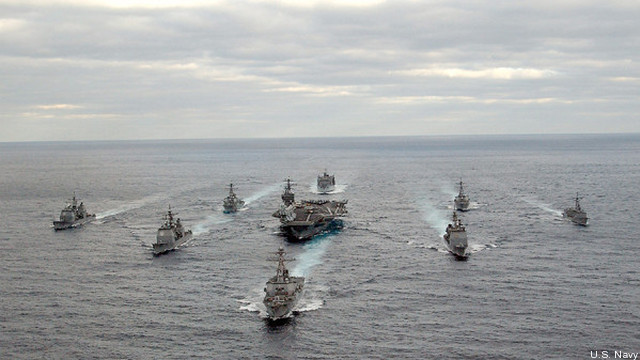 WASHINGTON: As the Navy prepares to push further into the Western Pacific, service leaders are doing all they can to prepare their warships for potential cyberattacks, the head of the Navy’s surface warfare fleet said today.
WASHINGTON: As the Navy prepares to push further into the Western Pacific, service leaders are doing all they can to prepare their warships for potential cyberattacks, the head of the Navy’s surface warfare fleet said today.
Cyberwarfare remains the preeminent threat to U.S. naval forces around the world, Vice Adm. Richard Hunt, commander of naval surface forces, said today. The Navy, along with the rest of the Pentagon and U.S. government, are constantly pursuing ways to fortify government networks from cyberattacks. Many of these attacks are alledgedly launched by China or their allies across the globe. Aside from protecting its key networks, Navy leaders are also looking at ways to keep the fleet combat ready in the wake of a cyberattack.
Hunt stressed maintaining the readiness and resiliance of Navy warships, even if critical communication networks are clipped due to a cyberattack. One strategy Hunt and other Navy leaders are exploring is extending how long a ship can sustain itself at sea without resupply. If a cyberattack cripples a ship’s navigation and communications systems, it is essentialy on its own. A ship’s crew can survive and fight without resupply or support for only a finite amount of time. Since there is no guarantee when that isolated ship will be able to reestablish comms with the rest of the fleet, service leaders want to stretch how long that vessel can fend for itself in contested waters, Hunt explained. “We need to find a way to work around that,” he added.
Navy leaders are also looking to implement a more rigorous ship inspection process to “minimize discovery” of sometimes fatal flaws in some of the fleet’s older vessels. Spearheaded by Hunt’s office, the Navy is “actively moving forward” with those plans, the three-star admiral said. Service leaders are in the midst of putting the final touches on a Navy-wide guidance outlining the aggressive new plan, he added. This plan, if successful, will help the Navy take on the massive role envisioned for the service in the White House’s new national security strategy. President Obama personally unveiled the plan last week at the Pentagon.
With a limited number of new ships expected to come into the fleet over the next decade, Navy leaders will need every functional hull in the water to make the administration’s plan work. For his part, Hunt is not worried. “If there is a [maritime] chokepoint out there, we are going to be there,” he said.
Multi-ship amphib buy could net $900M in savings, say Navy, Marine Corps officials
Lawmakers gave the Navy authorities to ink a multi-ship amphib deal years ago, but the service has not utilized that power yet.


























